Jia Wan
Temporal Unlearnable Examples: Preventing Personal Video Data from Unauthorized Exploitation by Object Tracking
Jul 10, 2025Abstract:With the rise of social media, vast amounts of user-uploaded videos (e.g., YouTube) are utilized as training data for Visual Object Tracking (VOT). However, the VOT community has largely overlooked video data-privacy issues, as many private videos have been collected and used for training commercial models without authorization. To alleviate these issues, this paper presents the first investigation on preventing personal video data from unauthorized exploitation by deep trackers. Existing methods for preventing unauthorized data use primarily focus on image-based tasks (e.g., image classification), directly applying them to videos reveals several limitations, including inefficiency, limited effectiveness, and poor generalizability. To address these issues, we propose a novel generative framework for generating Temporal Unlearnable Examples (TUEs), and whose efficient computation makes it scalable for usage on large-scale video datasets. The trackers trained w/ TUEs heavily rely on unlearnable noises for temporal matching, ignoring the original data structure and thus ensuring training video data-privacy. To enhance the effectiveness of TUEs, we introduce a temporal contrastive loss, which further corrupts the learning of existing trackers when using our TUEs for training. Extensive experiments demonstrate that our approach achieves state-of-the-art performance in video data-privacy protection, with strong transferability across VOT models, datasets, and temporal matching tasks.
D2AF: A Dual-Driven Annotation and Filtering Framework for Visual Grounding
May 30, 2025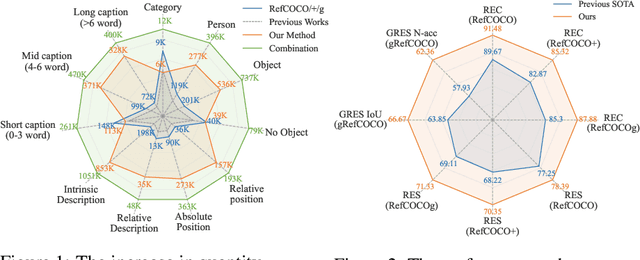
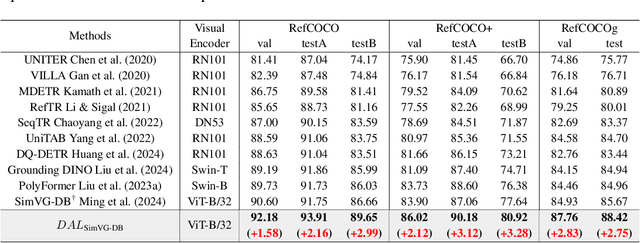

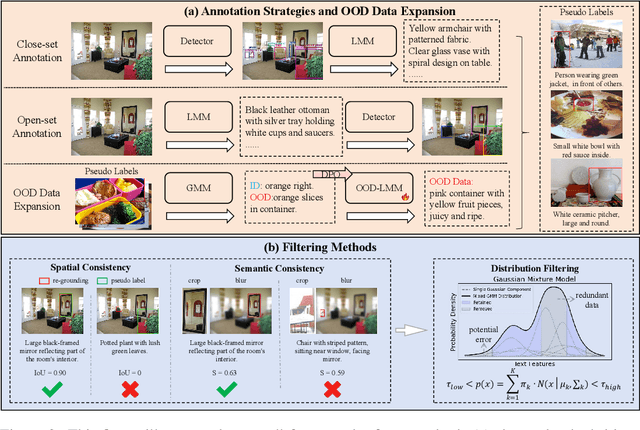
Abstract:Visual Grounding is a task that aims to localize a target region in an image based on a free-form natural language description. With the rise of Transformer architectures, there is an increasing need for larger datasets to boost performance. However, the high cost of manual annotation poses a challenge, hindering the scale of data and the ability of large models to enhance their effectiveness. Previous pseudo label generation methods heavily rely on human-labeled captions of the original dataset, limiting scalability and diversity. To address this, we propose D2AF, a robust annotation framework for visual grounding using only input images. This approach overcomes dataset size limitations and enriches both the quantity and diversity of referring expressions. Our approach leverages multimodal large models and object detection models. By implementing dual-driven annotation strategies, we effectively generate detailed region-text pairs using both closed-set and open-set approaches. We further conduct an in-depth analysis of data quantity and data distribution. Our findings demonstrate that increasing data volume enhances model performance. However, the degree of improvement depends on how well the pseudo labels broaden the original data distribution. Based on these insights, we propose a consistency and distribution aware filtering method to further improve data quality by effectively removing erroneous and redundant data. This approach effectively eliminates noisy data, leading to improved performance. Experiments on three visual grounding tasks demonstrate that our method significantly improves the performance of existing models and achieves state-of-the-art results.
Few-Shot Vision-Language Action-Incremental Policy Learning
Apr 22, 2025Abstract:Recently, Transformer-based robotic manipulation methods utilize multi-view spatial representations and language instructions to learn robot motion trajectories by leveraging numerous robot demonstrations. However, the collection of robot data is extremely challenging, and existing methods lack the capability for continuous learning on new tasks with only a few demonstrations. In this paper, we formulate these challenges as the Few-Shot Action-Incremental Learning (FSAIL) task, and accordingly design a Task-prOmpt graPh evolutIon poliCy (TOPIC) to address these issues. Specifically, to address the data scarcity issue in robotic imitation learning, TOPIC learns Task-Specific Prompts (TSP) through the deep interaction of multi-modal information within few-shot demonstrations, thereby effectively extracting the task-specific discriminative information. On the other hand, to enhance the capability for continual learning on new tasks and mitigate the issue of catastrophic forgetting, TOPIC adopts a Continuous Evolution Strategy (CES). CES leverages the intrinsic relationships between tasks to construct a task relation graph, which effectively facilitates the adaptation of new tasks by reusing skills learned from previous tasks. TOPIC pioneers few-shot continual learning in the robotic manipulation task, and extensive experimental results demonstrate that TOPIC outperforms state-of-the-art baselines by over 26$\%$ in success rate, significantly enhancing the continual learning capabilities of existing Transformer-based policies.
Density-based Object Detection in Crowded Scenes
Apr 14, 2025Abstract:Compared with the generic scenes, crowded scenes contain highly-overlapped instances, which result in: 1) more ambiguous anchors during training of object detectors, and 2) more predictions are likely to be mistakenly suppressed in post-processing during inference. To address these problems, we propose two new strategies, density-guided anchors (DGA) and density-guided NMS (DG-NMS), which uses object density maps to jointly compute optimal anchor assignments and reweighing, as well as an adaptive NMS. Concretely, based on an unbalanced optimal transport (UOT) problem, the density owned by each ground-truth object is transported to each anchor position at a minimal transport cost. And density on anchors comprises an instance-specific density distribution, from which DGA decodes the optimal anchor assignment and re-weighting strategy. Meanwhile, DG-NMS utilizes the predicted density map to adaptively adjust the NMS threshold to reduce mistaken suppressions. In the UOT, a novel overlap-aware transport cost is specifically designed for ambiguous anchors caused by overlapped neighboring objects. Extensive experiments on the challenging CrowdHuman dataset with Citypersons dataset demonstrate that our proposed density-guided detector is effective and robust to crowdedness. The code and pre-trained models will be made available later.
Embodied Crowd Counting
Mar 11, 2025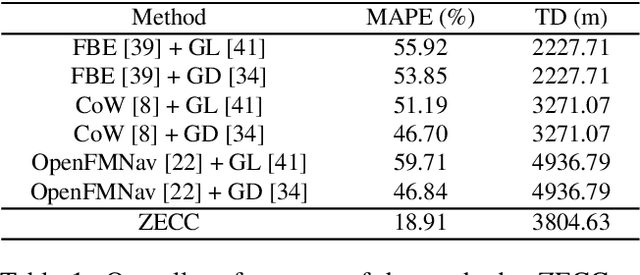
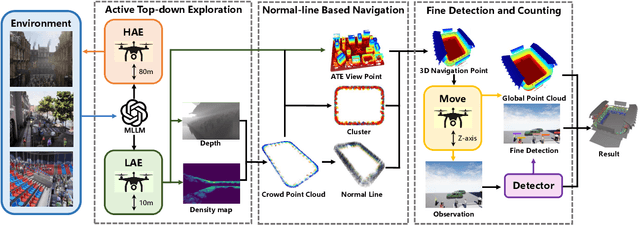

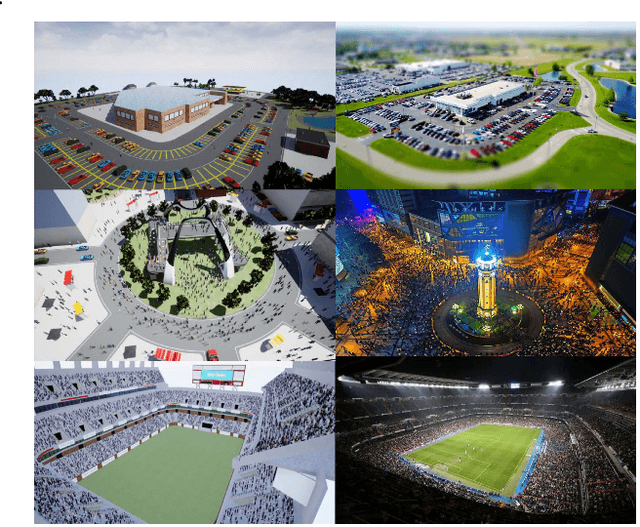
Abstract:Occlusion is one of the fundamental challenges in crowd counting. In the community, various data-driven approaches have been developed to address this issue, yet their effectiveness is limited. This is mainly because most existing crowd counting datasets on which the methods are trained are based on passive cameras, restricting their ability to fully sense the environment. Recently, embodied navigation methods have shown significant potential in precise object detection in interactive scenes. These methods incorporate active camera settings, holding promise in addressing the fundamental issues in crowd counting. However, most existing methods are designed for indoor navigation, showing unknown performance in analyzing complex object distribution in large scale scenes, such as crowds. Besides, most existing embodied navigation datasets are indoor scenes with limited scale and object quantity, preventing them from being introduced into dense crowd analysis. Based on this, a novel task, Embodied Crowd Counting (ECC), is proposed. We first build up an interactive simulator, Embodied Crowd Counting Dataset (ECCD), which enables large scale scenes and large object quantity. A prior probability distribution that approximates realistic crowd distribution is introduced to generate crowds. Then, a zero-shot navigation method (ZECC) is proposed. This method contains a MLLM driven coarse-to-fine navigation mechanism, enabling active Z-axis exploration, and a normal-line-based crowd distribution analysis method for fine counting. Experimental results against baselines show that the proposed method achieves the best trade-off between counting accuracy and navigation cost.
Noisy Zero-Shot Coordination: Breaking The Common Knowledge Assumption In Zero-Shot Coordination Games
Nov 07, 2024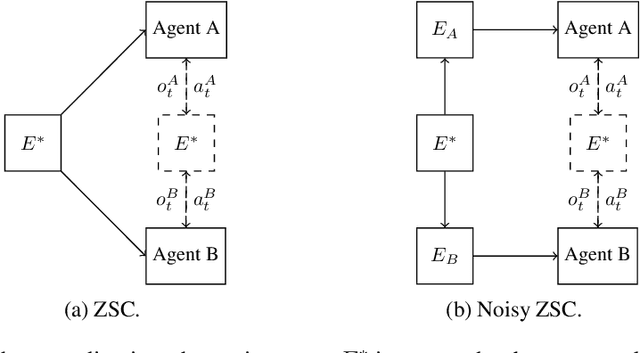
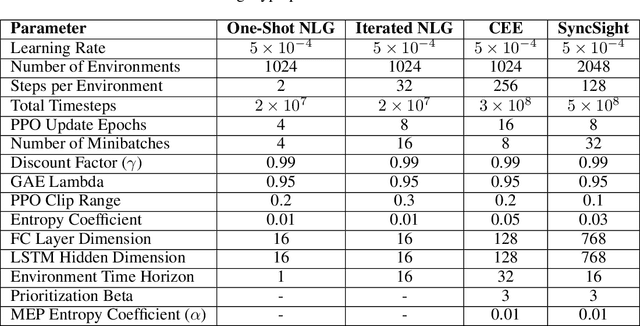

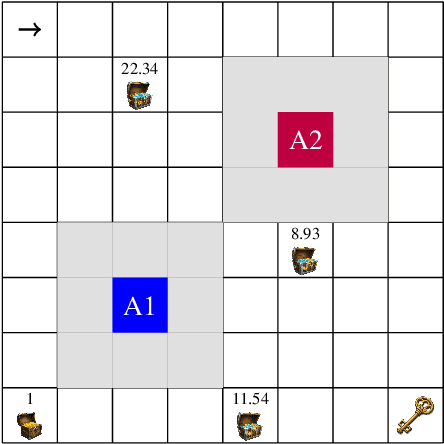
Abstract:Zero-shot coordination (ZSC) is a popular setting for studying the ability of reinforcement learning (RL) agents to coordinate with novel partners. Prior ZSC formulations assume the $\textit{problem setting}$ is common knowledge: each agent knows the underlying Dec-POMDP, knows others have this knowledge, and so on ad infinitum. However, this assumption rarely holds in complex real-world settings, which are often difficult to fully and correctly specify. Hence, in settings where this common knowledge assumption is invalid, agents trained using ZSC methods may not be able to coordinate well. To address this limitation, we formulate the $\textit{noisy zero-shot coordination}$ (NZSC) problem. In NZSC, agents observe different noisy versions of the ground truth Dec-POMDP, which are assumed to be distributed according to a fixed noise model. Only the distribution of ground truth Dec-POMDPs and the noise model are common knowledge. We show that a NZSC problem can be reduced to a ZSC problem by designing a meta-Dec-POMDP with an augmented state space consisting of all the ground-truth Dec-POMDPs. For solving NZSC problems, we propose a simple and flexible meta-learning method called NZSC training, in which the agents are trained across a distribution of coordination problems - which they only get to observe noisy versions of. We show that with NZSC training, RL agents can be trained to coordinate well with novel partners even when the (exact) problem setting of the coordination is not common knowledge.
Exploiting Exogenous Structure for Sample-Efficient Reinforcement Learning
Sep 22, 2024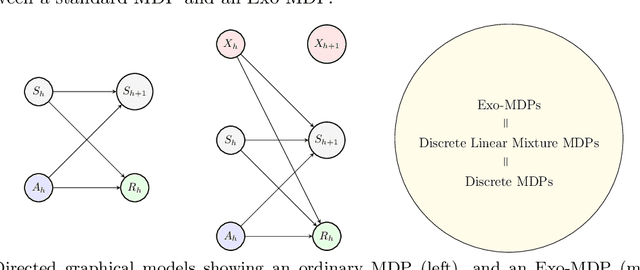


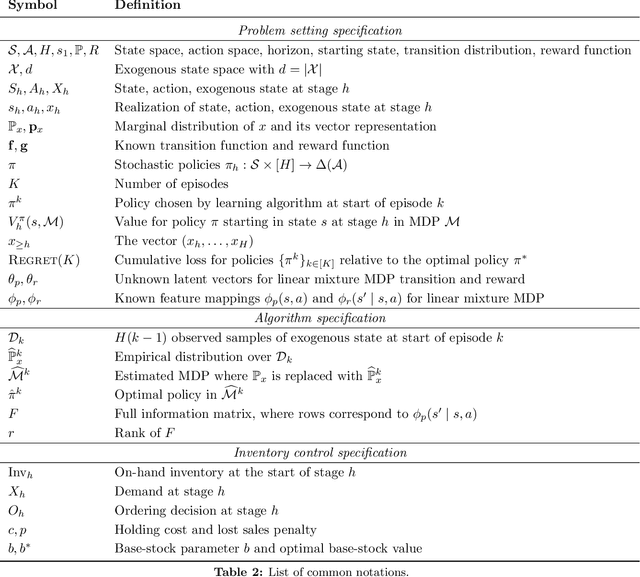
Abstract:We study a class of structured Markov Decision Processes (MDPs) known as Exo-MDPs, characterized by a partition of the state space into two components. The exogenous states evolve stochastically in a manner not affected by the agent's actions, whereas the endogenous states are affected by the actions, and evolve in a deterministic and known way conditional on the exogenous states. Exo-MDPs are a natural model for various applications including inventory control, finance, power systems, ride sharing, among others. Despite seeming restrictive, this work establishes that any discrete MDP can be represented as an Exo-MDP. Further, Exo-MDPs induce a natural representation of the transition and reward dynamics as linear functions of the exogenous state distribution. This linear representation leads to near-optimal algorithms with regret guarantees scaling only with the (effective) size of the exogenous state space $d$, independent of the sizes of the endogenous state and action spaces. Specifically, when the exogenous state is fully observed, a simple plug-in approach achieves a regret upper bound of $O(H^{3/2}\sqrt{dK})$, where $H$ denotes the horizon and $K$ denotes the total number of episodes. When the exogenous state is unobserved, the linear representation leads to a regret upper bound of $O(H^{3/2}d\sqrt{K})$. We also establish a nearly matching regret lower bound of $\Omega(Hd\sqrt{K})$ for the no observation regime. We complement our theoretical findings with an experimental study on inventory control problems.
Robust Unsupervised Crowd Counting and Localization with Adaptive Resolution SAM
Feb 27, 2024



Abstract:The existing crowd counting models require extensive training data, which is time-consuming to annotate. To tackle this issue, we propose a simple yet effective crowd counting method by utilizing the Segment-Everything-Everywhere Model (SEEM), an adaptation of the Segmentation Anything Model (SAM), to generate pseudo-labels for training crowd counting models. However, our initial investigation reveals that SEEM's performance in dense crowd scenes is limited, primarily due to the omission of many persons in high-density areas. To overcome this limitation, we propose an adaptive resolution SEEM to handle the scale variations, occlusions, and overlapping of people within crowd scenes. Alongside this, we introduce a robust localization method, based on Gaussian Mixture Models, for predicting the head positions in the predicted people masks. Given the mask and point pseudo-labels, we propose a robust loss function, which is designed to exclude uncertain regions based on SEEM's predictions, thereby enhancing the training process of the counting networks. Finally, we propose an iterative method for generating pseudo-labels. This method aims at improving the quality of the segmentation masks by identifying more tiny persons in high-density regions, which are often missed in the first pseudo-labeling stage. Overall, our proposed method achieves the best unsupervised performance in crowd counting, while also being comparable results to some supervised methods. This makes it a highly effective and versatile tool for crowd counting, especially in situations where labeled data is not available.
Analysing the Sample Complexity of Opponent Shaping
Feb 08, 2024



Abstract:Learning in general-sum games often yields collectively sub-optimal results. Addressing this, opponent shaping (OS) methods actively guide the learning processes of other agents, empirically leading to improved individual and group performances in many settings. Early OS methods use higher-order derivatives to shape the learning of co-players, making them unsuitable for shaping multiple learning steps. Follow-up work, Model-free Opponent Shaping (M-FOS), addresses these by reframing the OS problem as a meta-game. In contrast to early OS methods, there is little theoretical understanding of the M-FOS framework. Providing theoretical guarantees for M-FOS is hard because A) there is little literature on theoretical sample complexity bounds for meta-reinforcement learning B) M-FOS operates in continuous state and action spaces, so theoretical analysis is challenging. In this work, we present R-FOS, a tabular version of M-FOS that is more suitable for theoretical analysis. R-FOS discretises the continuous meta-game MDP into a tabular MDP. Within this discretised MDP, we adapt the $R_{max}$ algorithm, most prominently used to derive PAC-bounds for MDPs, as the meta-learner in the R-FOS algorithm. We derive a sample complexity bound that is exponential in the cardinality of the inner state and action space and the number of agents. Our bound guarantees that, with high probability, the final policy learned by an R-FOS agent is close to the optimal policy, apart from a constant factor. Finally, we investigate how R-FOS's sample complexity scales in the size of state-action space. Our theoretical results on scaling are supported empirically in the Matching Pennies environment.
Diffusion-based Data Augmentation for Object Counting Problems
Jan 25, 2024Abstract:Crowd counting is an important problem in computer vision due to its wide range of applications in image understanding. Currently, this problem is typically addressed using deep learning approaches, such as Convolutional Neural Networks (CNNs) and Transformers. However, deep networks are data-driven and are prone to overfitting, especially when the available labeled crowd dataset is limited. To overcome this limitation, we have designed a pipeline that utilizes a diffusion model to generate extensive training data. We are the first to generate images conditioned on a location dot map (a binary dot map that specifies the location of human heads) with a diffusion model. We are also the first to use these diverse synthetic data to augment the crowd counting models. Our proposed smoothed density map input for ControlNet significantly improves ControlNet's performance in generating crowds in the correct locations. Also, Our proposed counting loss for the diffusion model effectively minimizes the discrepancies between the location dot map and the crowd images generated. Additionally, our innovative guidance sampling further directs the diffusion process toward regions where the generated crowd images align most accurately with the location dot map. Collectively, we have enhanced ControlNet's ability to generate specified objects from a location dot map, which can be used for data augmentation in various counting problems. Moreover, our framework is versatile and can be easily adapted to all kinds of counting problems. Extensive experiments demonstrate that our framework improves the counting performance on the ShanghaiTech, NWPU-Crowd, UCF-QNRF, and TRANCOS datasets, showcasing its effectiveness.
 Add to Chrome
Add to Chrome Add to Firefox
Add to Firefox Add to Edge
Add to Edge